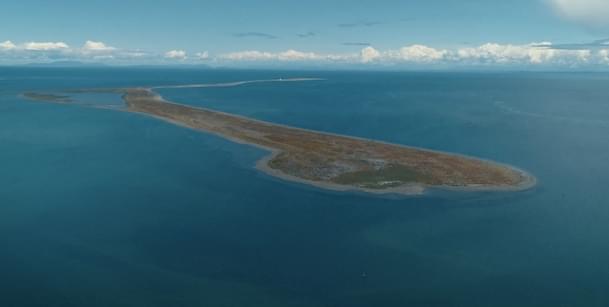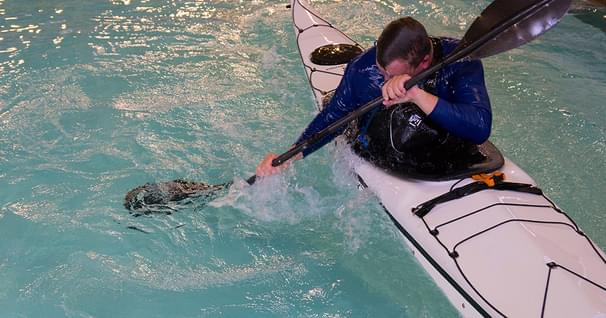The X Rescue
This is the most straightforward rescue, beyond simply righting the boat and pumping it dry. Approach the upturned kayak and grasp it at the bow end. It is essential that the capsized paddler remains in contact with his own or the rescue kayak at all times during the rescue procedure. If he doesn't, the kayaks may be blown along faster than he can swim.
Right the inverted kayak, left the bow across your foredeck, and roll it onto its side. If it doesn't drain completely on its side, roll it upside down to finish the job. Right the kayak, lift it back onto the water and swing it alongside your craft. Direct the stern of the empty boat towards your bow; the person in the water will find it easiest to get back in from that direction.
Rest both paddles across both decks and grip the empty kayak at the front of the cockpit with one hand and your deck with the other hand. By lying back into the water, lifting both feet into the cockpit, and pulling the two kayaks together behind you, you can re-enter. The rescuer will need to steady the other kayak until their spray-deck is secure.
Separating again can sometimes be an awkward maneuver, especially with tippy kayaks on choppy water. Instruct your companion to perform a low brace support on the water while you push their kayak firmly past you. The movement lends stability to the paddle brace until the kayaks are far enough apart for normal paddling.
Excerpted from Nigel Foster's Sea Kayaking by Nigel Foster with permission from Falcon Publishing.
Related Articles
Dungeness Spit from above, with the New Dungeness Lighthouse in the distance Dungeness…
Whether you were new to paddling in 2018 or you're an experienced paddler, you can never stop learning.…
Mention “pool session” and the first image that pops into most kayakers minds is a class in how to roll.…
What's the best way to quiet a novice paddling class? Mention the "Eskimo Roll." Nothing worries…



